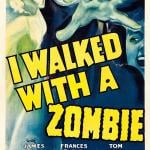They must’ve handed out bonuses recently at the New Yorker, because Mssrs. Denby and Lane have been working against form lately (particularly the later) and seem to be actually enjoying the movies. That’s apropos of nothing in particular except to note that one ought not ignore “Contagion,” given a nearly rapturous review by David Denby.
“Contagion” is directed by Steven Soderbergh, who returned to the phase in his artistic cycle that reads “time to make a good, serious film.” Part of the pleasure of Soderbergh’s films is how he assembles a cast of A-list actors and, with them, can churn out either “Ocean’s Eleven” or “Traffic,” the first a celebration of celebrity and the second a reminder of why some folk might actually deserve their fame.
But that’s not what I’m interested in today. Instead, I want to reflect on Denby’s final observation about the film. After noting that the heroism of “Contagion” is performed by realistic scientists acting in realistic ways, Denby writes:
. . . the heroes are all employees of the federal government, and instinctively factual people. No one prays, no one calls on God. “Contagion” lacks any spiritual dimension—except for a passionate belief in science and rational administration. The movie says: When there’s real trouble, we’re in the hands of the reality-based community. No one else matters.
Well then. On the one hand, this could be Denby’s—and perhaps Soderbergh’s—dig at Tea Party distrust of government or some of the anti-scientific excesses of the Bush administration. Or maybe it’s just about Michele Bachmann.
On the other hand, there is a clear theological judgment coming from Denby: when a metaphorical hell breaks loose, the only help we can count on is our own, human efforts and God both remain impressively absent. This isn’t so much anti-religious as it is a critical and cinematic representation of the deus absconditus: God has left us to fend for ourselves with what we’ve been given.
At least that’s Denby’s point; I’m not sure if it’s Soderbergh’s. In my viewing of the film, I noticed only two instances of overt religious imagery. The first comes in a montage of images used to convey global panic in the face of a contagious epidemic: empty airports, empty offices, empty streets, and an empty mosque. The impact of that brief shot is more cumulative than theological, a representation of how fear actually works. Better, when a disease spreads by touch and breath, to be in a fox hole than in a prayer hall. Which doesn’t mean prayer doesn’t happen, just that one wisely chooses to pray alone.
The second clip is no lengthier but certainly more complicated. A doctor for the World Health Organization, played by Marion Cotillard, has been kidnapped in China—where she was working to trace the origin of the pandemic—and is held ransom for many months in a small village whose residents had been decimated by the disease. Her captors want only early access to a (as yet undeveloped) vaccine in exchange. When informed that she is about to be released, Cotillard is shown teaching English to children in a small open-air pavilion. As she exits, the scene cuts to an external view and the structure is shown to have a cross hanging near the apex. Was this a missionary school? Is it still? What do we make of its location in China? The film is set in the present-day, so we are either in a slightly alternative China (although other clues suggest this is very much the China of our own world), or the structure is a remnant from an earlier time or else clandestine. But Cotillard is not playing a missionary, she’s a scientist. And the instruction is basic language skills, not doctrine. Soderbergh is a careful enough director that the cross is not an accident, which forces us to wonder “why?”
I want to pause here for a moment to take exception with Denby’s assertion that the film’s heroes are “instinctively factual”: more—and sometimes rather—than rational, the heroes are instinctively moral. Laurence Fishburne, playing a CDC director, violates protocol by telling his girlfriend to flee Chicago before word of the disease has been officially released, but also gives his own vaccination dose to the son of his building’s janitor. Kate Winslet, also playing a CDC investigator, calls the front desk of her hotel to warn anyone who might have had contact with her after fearing she’s become infected. Cotillard, upon learning that her ransom was paid with a fraudulent placebo, abruptly leaves her superior, perhaps to return to the village where she’d been held captive. Matt Damon plays a father (and not a scientist) whose wayward wife first brings the disease to the US. He quarantines his teenage daughter—an effective and sometimes funny depiction of the “dad with a shotgun” routine—but also holds an intimate prom for her once her foolishly brave boyfriend has been vaccinated.
These actions are sometimes rational but also sometimes contradict strictly rational behavior. They are, instead, human, and intensely moral in the sense that these people try to do more than save themselves and even others: they try to do the right thing, to weld reason and safety with compassion and love, to preserve not just life but the reasons for living.
That, I think, is Soderbergh’s agenda. Not simply the necessity of functional government, but more importantly the necessity of a functional and expansive soul. Whether that is incubated by a or any religion is irrelevant, but it is the heart of the story.











